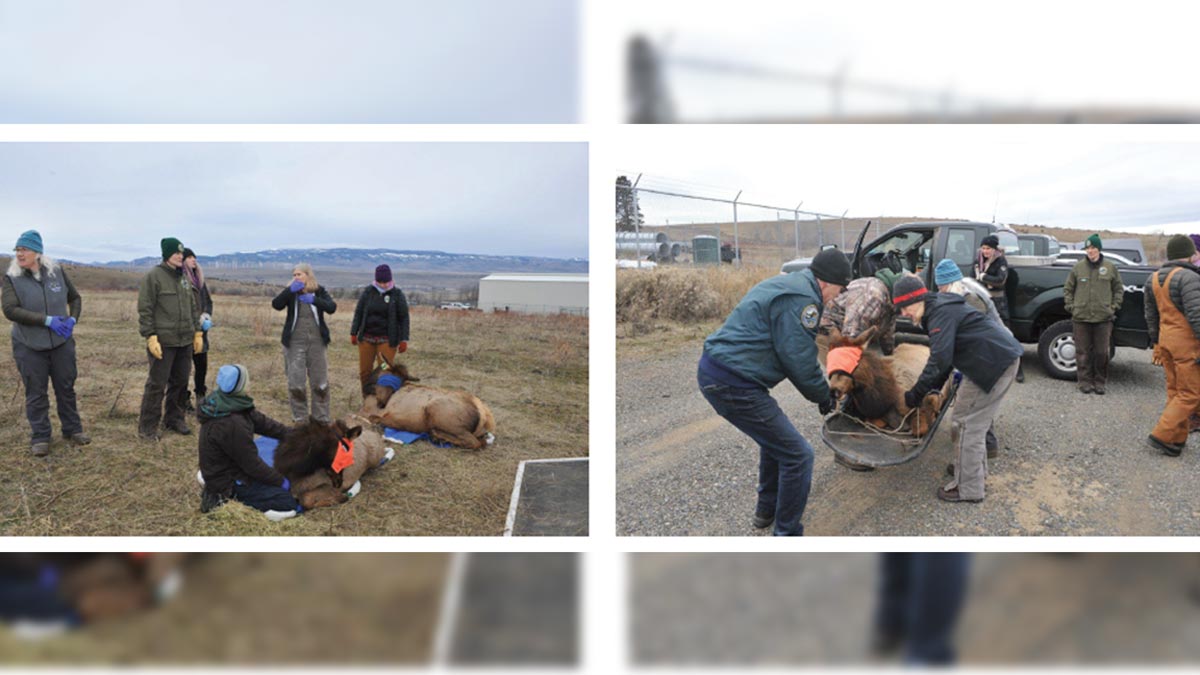Crews recently wrapped up construction on the world’s only facility focused solely on elk hoof disease. Located on the campus of Washington State University in Pullman, the state-of-the-art, four-acre, $1.2 million lab houses captive elk needed to study the disease in a secure, controlled environment.
The facility acquired its first elk, a young orphaned bull, near Mt. Ranier in late 2019. Since then, researchers worked with the Washington Department of Fish and Wildlife to capture four more young wild elk, two males and two females, from central Washington and transport them to Pullman. More captures will follow.
“The objective of the initial study is to determine whether elk hoof disease is infectious and transmissible to otherwise healthy elk through natural routes of transmission in captivity,” said Margaret Wild, lead scientist. “We will expose healthy elk to elk with hoof disease and monitor disease progression. Based on findings from this trial we will plan the next studies to be conducted at the research facility.”
The facility features 10 isolation pens, a handling facility, and two 1.5-acre holding pastures. Research falls under the umbrella of WSU’s Department of Veterinary Microbiology and Pathology.
Biologists identified hoof disease in elk herds across most of western Washington, as well as east of the Cascades in the Trout Lake and Walla Walla areas, with additional cases diagnosed in northern Oregon and western Idaho.
Findings from research conducted at the facility will aid wildlife agencies in managing the impacts of hoof disease in elk populations.
The Rocky Mountain Elk Foundation provided $100,000 in grant funding to assist with construction of the facility.
(Photo source: Washington State University)
